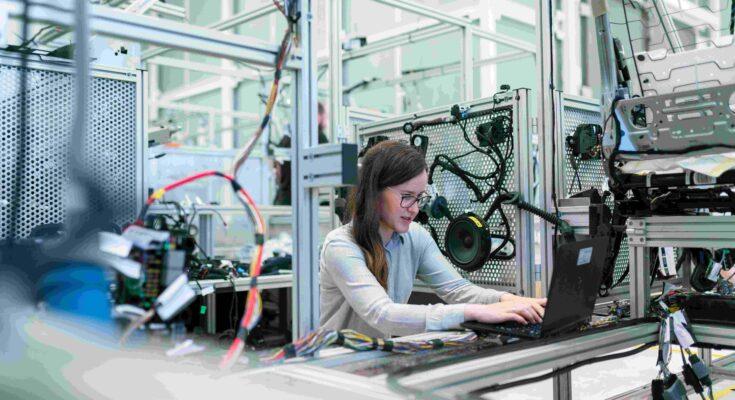New Technology 2023
it’s possible that we may see advancements in areas such as artificial intelligence, virtual and augmented reality, 5G technology, quantum computing, and blockchain. We may also see continued growth and innovation in the Internet of Things (IoT) and edge computing, as well as developments in renewable energy and sustainability technologies. It’s important to note that predicting the exact nature and timing of future technological advancements can be challenging, as it often depends on a wide range of factors including funding, research and development, market demand, and regulatory environments.
01. Virtual Reality (VR)
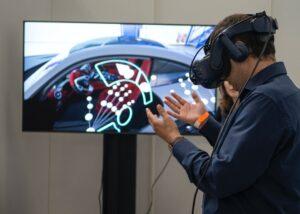
Users of virtual reality (VR) technology can feel as though they are physically there in a computer-generated environment. VR typically uses a headset that covers the user’s eyes and has a display screen, as well as controllers or other tracking devices that let the user move around and interact with the virtual environment.
Although virtual reality (VR) technology has been around for a while, recent improvements in computing power and display technology have made it more widely available and immersive than ever. VR is currently used in a wide range of sectors, including gaming, entertainment, healthcare, and education.
VR makes gaming more participatory and immersive for gamers, giving them the impression that they are actually in the game’s world. Virtual reality is now being utilized in education to build simulations and classrooms that let students explore and learn in novel ways. VR is being used in the healthcare industry for training and simulation exercises as well as for the treatment of ailments including phobias and PTSD.
The ability to create experiences that would be impossible or too dangerous in the real world is one of the main advantages of virtual reality. For instructional purposes, VR can imitate hazardous or severe locations, or it can give people a safe and controlled method to experience space travel or otherworldly settings.
Overall, virtual reality is a rapidly developing technology with a variety of uses and potential advantages. The way we learn, work, and play has the potential to change as technology develops and becomes more widely available.
VR Advantage
Virtual Reality (VR) uses several different technologies to create a simulated environment that users can interact with. Some of the key technologies used in VR include:
- Head-mounted displays (HMDs): These are the primary devices used to display the virtual world to the user. HMDs typically consist of a headset that covers the user’s eyes and displays two separate images to create a 3D effect. Some HMDs also include built-in sensors to track the user’s head movements and adjust the virtual display accordingly.
- Motion controllers: These devices allow users to interact with the virtual world using their hands and other body movements. Some motion controllers use sensors or cameras to track the user’s movements, while others use haptic feedback to provide a more realistic sense of touch.
- Positional tracking: This technology enables the VR system to track the user’s movements and adjust the virtual environment accordingly. This is typically achieved using sensors or cameras that are placed in the room or built into the VR headset.
- Computer graphics: VR relies heavily on advanced computer graphics to create realistic and immersive virtual environments. This includes everything from creating 3D models of objects and environments to rendering realistic lighting and shadows.
- Audio: High-quality audio is also essential for creating an immersive VR experience. This includes not only realistic sound effects but also spatial audio that adjusts based on the user’s position in the virtual environment.
Virtual Reality (VR) disadvantage
While Virtual Reality (VR) has many advantages, such as providing an immersive and interactive experience, there are also some disadvantages to consider:
- Cost: VR technology can be expensive, especially high-end systems that require powerful computers and specialized equipment. This can make it difficult for some people to access and experience VR.
- Physical discomfort: VR can cause physical discomfort and even nausea for some users, especially if the VR experience is poorly designed or the frame rate is not smooth. This is sometimes referred to as “VR sickness.”
- Isolation: VR can be a solitary experience, which can be a disadvantage for some people who prefer social interaction. While some VR experiences allow for multiplayer interaction, it is not the same as face-to-face interaction.
- Limited mobility: Depending on the VR system, users may be limited in their physical movement while wearing the headset or using motion controllers. This can impact the immersion of the experience and may make it difficult to perform certain tasks.
- Ethical concerns: As with any technology, there are ethical concerns surrounding the use of VR, such as the potential for addiction or the possibility of using VR to manipulate or deceive people.
Overall, while VR has many potential benefits and applications, it is important to consider these and other potential drawbacks when deciding whether or not to use or invest in VR technology.
02. BlockChain
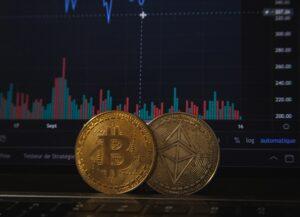
What is BlockChain?
Blockchain is a decentralized, open-source digital ledger technology that is used to securely and openly record and preserve transactions. Although it was initially designed to work with cryptocurrencies like Bitcoin, its potential uses go far beyond that.
A blockchain is made up of a number of blocks, each of which has a group of confirmed transactions. Each block in the chain is connected to the one before it, forming a safe and impenetrable record of every transaction. Decentralized technology like the blockchain eliminates the need for a central organization or middleman to oversee or verify transactions.
The immutability of blockchain technology is one of its main advantages. A block that has been added to the blockchain cannot be changed or removed without also changing all blocks that come after it. This makes the blockchain extremely resilient to fraud and tampering.
The transparency of blockchain is a key component. All transactions are tracked and kept on the blockchain, making it simple for anybody with network access to audit and confirm them. The blockchain is thus a perfect instrument for guaranteeing the accuracy of financial transactions, voting processes, supply networks, and other processes.
Blockchain technology has the potential to revolutionize a wide range of industries, from finance and healthcare to logistics and real estate. Its decentralized and secure nature makes it ideal for applications where trust and transparency are essential.
Blockchain technology offers several advantages, including:
- Decentralization: Blockchain technology is decentralized, meaning that there is no central authority controlling the network. This makes it more secure and resistant to attacks, as there is no single point of failure or vulnerability.
- Security: Blockchain technology is highly secure due to its cryptographic nature. Once data is added to the blockchain, it cannot be altered or deleted without also altering all subsequent blocks in the chain. This makes it extremely difficult to tamper with or manipulate the data.
- Transparency: Because all transactions on the blockchain are recorded and stored publicly, the technology offers high levels of transparency. This can be particularly useful in applications such as supply chain management or voting systems, where it is important to ensure that all parties involved can see and verify the data.
- Efficiency: Blockchain technology can help streamline processes and reduce costs by eliminating the need for intermediaries and reducing the time and resources required to verify and process transactions.
- Trust: Blockchain technology is built on a trustless system, meaning that transactions can be verified and processed without the need for trust between the parties involved. This can be particularly useful in situations where trust is difficult to establish, such as between parties in different countries or with different levels of expertise or authority.
Overall, the advantages of blockchain technology make it an ideal solution for a wide range of applications, from financial transactions to supply chain management and beyond. As the technology continues to evolve, it is likely that we will see even more use cases emerge.
While blockchain technology offers many advantages, there are also some potential disadvantages to consider, including:
- Complexity: Blockchain technology can be complex and difficult to understand, especially for those who are not familiar with cryptography and decentralized systems. This can make it challenging to implement and use effectively.
- Scalability: As the size of the blockchain grows, the amount of data that needs to be processed and stored also grows, which can lead to scalability issues. This can make it difficult to scale blockchain technology for use in large-scale applications.
- Energy consumption: Blockchain technology requires a lot of computing power to verify and process transactions, which can be energy-intensive. This has led to concerns about the environmental impact of blockchain, particularly in the case of proof-of-work consensus mechanisms.
- Regulatory challenges: As blockchain technology continues to gain popularity and be used in a wider range of applications, it is likely to face increased regulatory scrutiny. This can create legal and compliance challenges for companies and organizations using the technology.
- Immutability: While immutability is one of the key advantages of blockchain technology, it can also be a disadvantage in certain situations. Once data has been added to the blockchain, it cannot be altered or deleted, which can be problematic if errors or inaccuracies are discovered later.
Overall, while blockchain technology has the potential to revolutionize a wide range of industries, it is important to consider these and other potential drawbacks when deciding whether or not to use or invest in blockchain technology.
03. Internet of Things (IoT)
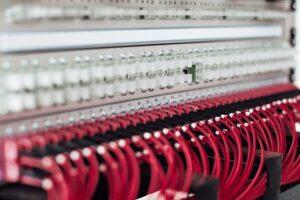
what is the Internet of Things (IoT)?
A network of actual things that are connected to the Internet and have the ability to communicate with one another is known as the Internet of Things (IoT). These items, which are frequently referred to as “smart” devices, contain sensors, software, and other technologies that enable data collection and interchange.
IoT aims to build a seamless, interconnected network of objects that may be used to automate processes, keep an eye on environments and systems, and boost overall effectiveness and productivity. The utilization of sensors and other technologies that enable devices to connect with one another, share data, and act on that data can be used to accomplish this.
IoT technology has a wide range of possible uses, from smart cities and homes to healthcare and industrial automation. Organizations may learn more about how systems and processes are operating, spot opportunities for improvement, and take action to improve performance by gathering and analyzing data from a variety of devices.
The ability of IoT technology to automate operations and processes lowers the need for human interaction and increases overall efficiency. This is one of the technology’s main advantages. IoT devices, for instance, can be used in a smart home to automatically regulate the temperature, turn on and off the lights, and even purchase groceries based on the preferences and routines of the homeowner.
the Internet of Things has the potential to revolutionize the way we live and work, creating a more connected and efficient world. However, as with any new technology, there are also potential challenges and risks to consider, such as data privacy and security concerns.
The Internet of Things (IoT) has many potential advantages, including:
- Increased efficiency and productivity: IoT devices can automate tasks and processes, reducing the need for human intervention and improving overall efficiency and productivity.
- Cost savings: By automating tasks and processes, IoT devices can help organizations save money on labor costs and other expenses.
- Improved decision-making: IoT devices can collect and analyze data in real-time, providing organizations with valuable insights into how systems and processes are working. This can help improve decision-making and drive better business outcomes.
- Enhanced safety and security: IoT devices can be used to monitor environments, detect potential hazards, and take action to mitigate risks. This can help improve safety and security in a wide range of applications, from industrial automation to healthcare.
- Better customer experiences: IoT devices can be used to personalize experiences and provide customers with more relevant and timely information. For example, in retail settings, IoT devices can be used to offer personalized recommendations and promotions based on a customer’s preferences and behavior.
- Environmental benefits: IoT devices can be used to monitor energy usage and reduce waste, helping organizations become more environmentally friendly.
Overall, the Internet of Things has the potential to transform the way we live and work, creating a more connected and efficient world. By leveraging IoT technology, organizations can automate tasks, gain valuable insights into their operations, and improve safety, security, and customer experiences.
The Internet of Things (IoT) has potential disadvantages that organizations and individuals should be aware of, including:
- Security risks: IoT devices may be vulnerable to cyber-attacks and hacking, which can compromise the data they collect and put individuals and organizations at risk. This can be especially concerning in applications such as healthcare, where IoT devices may collect sensitive patient data.
- Compatibility issues: IoT devices are often developed by different manufacturers, which can create compatibility issues when attempting to integrate them into a single system. This can make it challenging to achieve seamless communication and interoperability between devices.
- Complexity: IoT systems can be complex and require a significant amount of technical expertise to implement and manage. This can be a challenge for small businesses or individuals who may not have the necessary resources or knowledge to effectively utilize IoT technology.
- Reliability: IoT devices may not always function as expected, and technical issues or malfunctions can cause them to stop working altogether. This can be especially problematic in applications such as healthcare, where reliability is critical.
- Privacy concerns: IoT devices collect large amounts of data, which can include personal information about individuals. This raises concerns about data privacy and the potential for this information to be misused.
04. 5G Technology
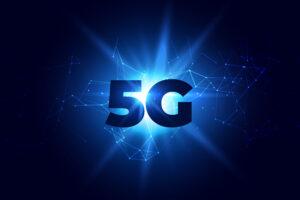
5G is the fifth generation of wireless technology for cellular networks, following 4G/LTE. 5G technology promises faster download and upload speeds, lower latency (the time it takes for a device to communicate with a server), and the ability to connect more devices simultaneously.
The technology uses higher-frequency radio waves than previous generations of wireless technology, which allows for more data to be transmitted over the same amount of time. It also uses advanced antenna technology such as Massive MIMO (Multiple Input Multiple Output) and beamforming to improve signal strength and coverage.
Some of the key benefits of 5G technology include:
- Faster speeds: 5G is capable of delivering download speeds of up to 20 Gbps, which is significantly faster than 4G/LTE.
- Lower latency: 5G technology promises latency as low as 1ms, which is important for applications that require real-time responsiveness, such as virtual reality and autonomous vehicles.
- Increased network capacity: 5G networks can support more devices per square kilometer than previous generations of wireless technology, which is important for the growing number of connected devices in the Internet of Things.
- Improved reliability: 5G networks use advanced technology such as beamforming to improve signal strength and reduce interference, which can improve overall network reliability.
- New applications: The high speed, low latency, and increased network capacity of 5G technology will enable a wide range of new applications, such as remote surgery, smart cities, and autonomous vehicles.
However, there are also some potential challenges with 5G technology, such as the need for more infrastructure to support the higher frequency radio waves and potential interference with other wireless technologies.
5G technology has many potential advantages, including:
- Faster speeds: 5G technology promises to deliver much faster download and upload speeds than previous generations of wireless technology. This can enable faster data transfers, smoother video streaming, and improved overall internet performance.
- Lower latency: 5G technology promises to deliver much lower latency than previous generations of wireless technology. This can enable real-time applications such as virtual reality, remote surgery, and autonomous vehicles.
- Increased network capacity: 5G technology promises to support many more devices per square kilometer than previous generations of wireless technology. This can enable the growth of the Internet of Things and support the increasing number of connected devices.
- Improved reliability: 5G technology uses advanced technologies such as beamforming to improve signal strength and reduce interference, which can improve overall network reliability.
- New applications: The high speed, low latency, and increased network capacity of 5G technology will enable a wide range of new applications, such as remote surgery, smart cities, and autonomous vehicles.

